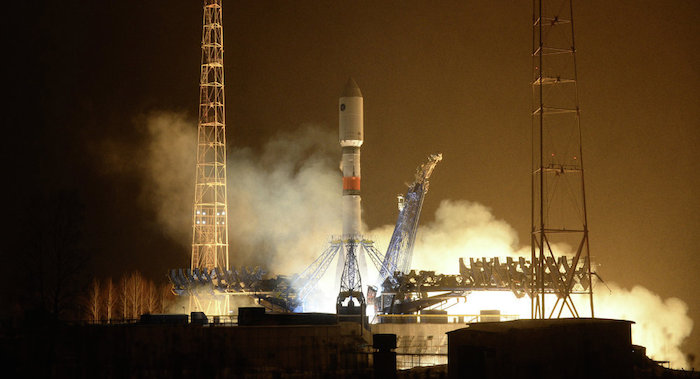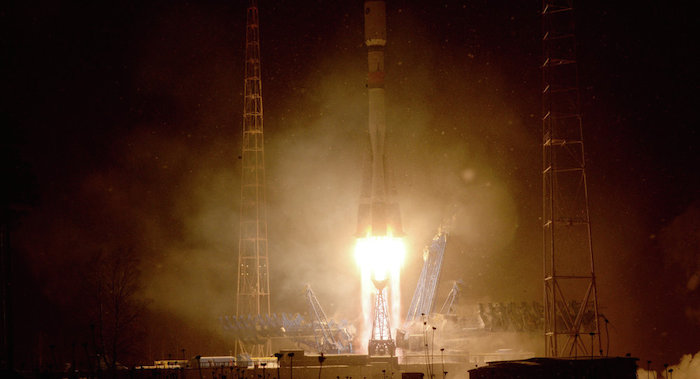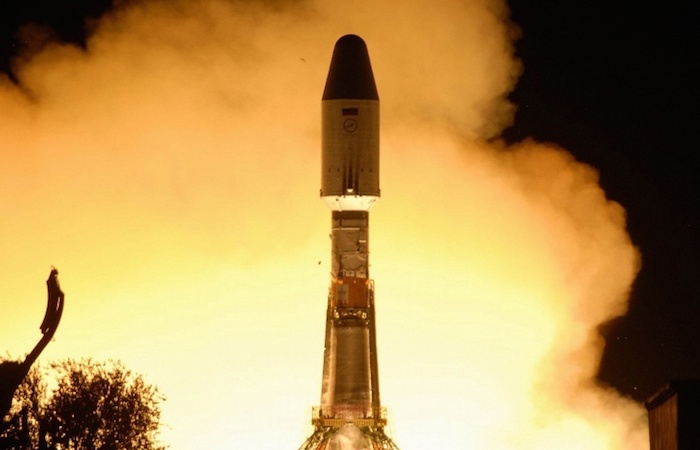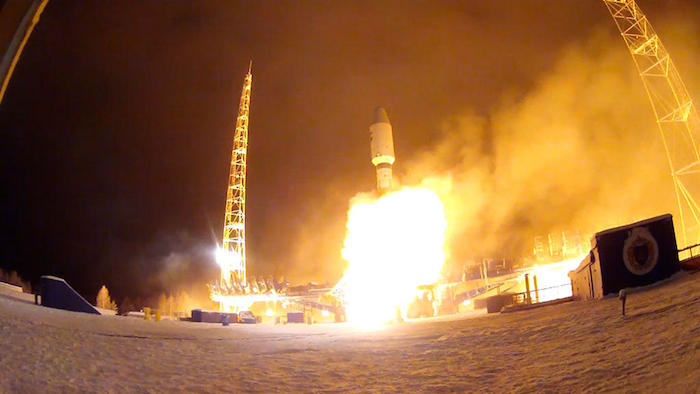.




A Russian Soyuz-2.1b carried rocket with a communications satellite has been launched from the Plestesk space centre in Russia’s northwestern Arkhangelsk region, Russian Defence Ministry Spokesman Colonel Alexei Zolotukhin told TASS on Thursday.
According to the spokesman, the satellite was put in orbit at 06:16 a.m. Moscow time. “Stable telemetric communications has been established and is maintained with the satellite. Its onboard systems are working normally,” he said.
The Soyuz-2.1b carrier rocket was blasted off at 06:01 a.m. Moscow time. The launch and the flight of the rocket and separation of the satellite proceeded in regular regime.
Quelle: TASS
.
Russia orbits new spy satellite

Less than 48 hours after Russia's brand-new Angara-A5 rocket blasted off from Plesetsk, military personnel at the near-polar circle launch site fired a hush-hush satellite into orbit from a neighbouring launch pad. According to official Russian media, the liftoff of the Soyuz-2-1b rocket took place on 25 December at 06:01 Moscow Time (03:01 UTC) from Pad 4 at Site 43 in Plesetsk. Around 10 minutes later, the launch vehicle delivered its cargo into the low Earth orbit. "At 06:16 Moscow Time, the assets of the Titov State Test Space Center established control over the satellite," Aleksei Zolotukhin, a spokesman for the Russian Air and Defense Forces, was quoted as saying by the official RIA Novosti news agency. Under a traditional Russian policy concerning military launches, the purpose of the particular space shot would not been officially confirmed. However, in this case, the web site of the Russian Ministry of Defense and RIA Novosti idenitified the payload as communications satellite. This was particularly strange given the fact that the spacecraft was inserted into orbit unusable for communications and a previous publication by a Russian defense contractor reliably "matched" this mission with a new spy satellite for electronic intelligence, or ELINT. Sensitive receivers on board ELINT satellites are used for eavesdropping on radio communications around the world. ELINT specialists could use intercepted signals to locate, characterize and target various installations and military vehicles of a potential enemy, if not directly decipher encrypted conversations. In the April issue of the corporate newspaper published by the KB Arsenal design bureau based in St Petersburg, its Deputy Chief Designer Aleksei Ivanov disclosed that his organization had completed an assembly of an upgraded version of the Lotos-S (lotus) satellite. At the time, the spacecraft was undergoing electrical and radio tests. "I hope this year, ground experimental testing of the vehicle will be finished and it would be possible to begin its flight testing," Ivanov said. Previous Russian industry publications identified Lotos-S as the latest generation of electronic intelligence instruments developed by Berg Institute in Moscow for installation on classified satellites built by RKTs Progress in Samara and assembled at Arsenal. It is also known that the first satellite carrying Lotos-S payload was launched in November 2009, after years of delays and, according to unofficial sources, operated until 2011. The second satellite in the Lotos-S series was to be equipped with more sophisticated instruments and launched as early as 2012. However problems with its predecessor probably kept it on the ground for two more years. Lotos-S is only one part of a wider constellation of satellites code-named Liana. The network should also include radar-carrying Pion spacecraft customized for radio-electronic intelligence at sea. Their information should help the Russian Navy to locate and target enemy ships. According to KB Arsenal, the first Pion satellite will fly next year. - See more at: http://sen.com/news/russia-orbits-new-spy-satellite#sthash.Kuh9wtCM.dpuf
Quelle: SEN
.
4283 Views
